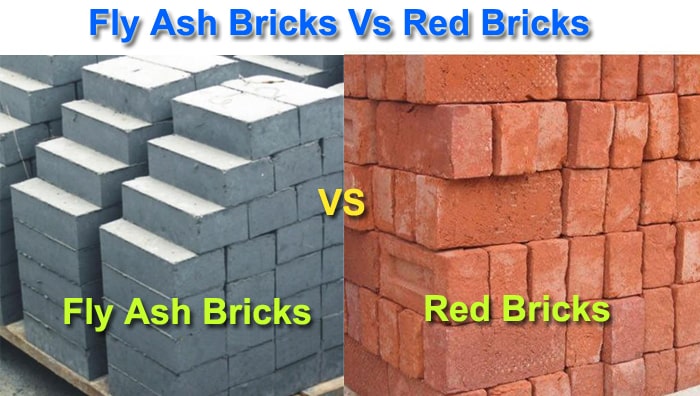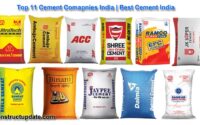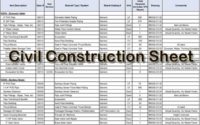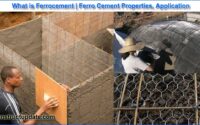Fly Ash Bricks Vs Red Bricks | Fly Ash Brick properties, advantages, disadvantages
Introduction of Fly Ash Bricks
A lump of coal is burned to produce heat energy, which is then transformed to electric power in thermal power stations. Fine particles make up the residue that forms when coal is compressed, and it rises with a few gases known as fly ash.
Toxic elements such as Mercuric, Arsenic, Chromium, Selenium, Lead, Cadmium, Nickel, and Zinc are found in trace concentrations in fly ash.
Fly ash is a thin powder that tends to move through the air, polluting the air, water, and causing respiratory difficulties when inhaled if not properly disposed of.
Fly ash is one of the many chemicals that pollute the air, water, and soil. It disrupts ecological and cyclical processes, as well as posing a number of risks.
Many novel uses of fly ash have been discovered as a result of research to address these issues. Fly ash bricks are one of its applications.
Fly ash is a building material made up of fly ash and water that is utilised in construction projects.
The following are the key components of fly ash bricks:
- Fly ash
- Cement
- Sand
- Water

Properties of Fly Ash Bricks:
- Fly ash bricks have a better load-bearing capacity due to their density of 1700-1850kg/m3.
- Fly ash bricks have a compressive strength of (10-12 N/mm2) and a density of 90-100 kg/cm2.
- Fly ash bricks absorb 10-14 percent of water, resulting in less wetness.
- During transit, there is less than 2% waste.
- It has a high level of toleration.
- Plastering with fly ash bricks might save up to 15% on energy costs.
Advantages of using fly ash bricks
Because fly ash bricks are light in weight, they are ideal for multi-story buildings, as the tension and strain on the base and structure increases as the building’s height rises.
This stress and strain is greatly reduced because to the lighter bricks.
These bricks absorb less heat and are better for the Indian environment than clay bricks.
There is virtually no breakage during transit and use due to the great strength.
Water leakage through bricks is minimised as a result of less water penetration.
Without a lime plaster backing coat, gypsum plaster (plaster of Paris) can be placed straight to these bricks.
It is not necessary to soak these bricks in water for 24 hours; a sprinkling of water prior to use is adequate.
During building, less mortar is used, and the machine requires less effort to operate.
Disadvantages:
- Fly ash bricks in general are not suitable for use in construction. To avoid negative consequences, high-quality fly ash bricks are required.
- If the fly ash bricks are not properly prepared, they will lose their strength and would be unfit for construction.
- Only the modular size of these bricks is available. Due to cracks, larger bricks are not formed.
- Because a smooth finish reduces bonding, we must be cautious when masonry work is underway.
- Because of the flat surface, plaster does not create a good bond with those bricks during plastering.
- Fly ash bricks are not appropriate for use in the winter.
Fly Ash Bricks and Red Bricks are compared (Clay Bricks) as follow:
Fly ash bricks
Cement, slag, and fly ash are used to make these bricks.
The colour of fly ash bricks is cement grey.
Because these bricks are cast in a machine mould, they have a consistent shape.
Fly ash bricks have a compressive strength of 75-100 kg/cm2.
Fly ash bricks have a density of 1700-1850 kg/m3.
On-site waste of these bricks is roughly 2-5 percent.
Fly ash bricks weigh 2.6kg each.
In comparison to red brick, fly ash brick is less expensive.
Red bricks
Clay soil is used to make red bricks.
The colour of red brick ranges from red to light brown.
Because red bricks are hand-molded, they do not have a consistent shape.
Red brick has a compressive strength of 30-35 kg/cm2.
Red brick has a density of 1600-1750 kg/m3.
The amount of waste on a red brick site is higher than 10%.
The weight of a red brick is around 3.5 kg.
Red brick is more expensive than fly ash brick.




